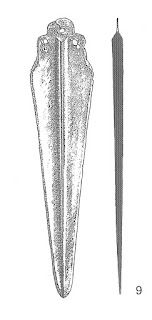Archetype0ne
Regular Member
- Messages
- 1,726
- Reaction score
- 614
- Points
- 113
- Ethnic group
- Albanian
- Y-DNA haplogroup
- L283>Y21878>Y197198
I generally agree with this map, but I don't think J-L283 was that far north. IMO, it likely migrated around the northern shores of the Black Sea. As previously reported here, the new Armenian J-L283* is actually negative for ~7 SNPs at current J-L283 level, so the split with the European branches, and the TMRCA of J-L283, should be around 6000 ybp. This makes it very likely that it migrated to Europe sometime after 6000 ybp, but no later than 4400 ybp (J-Z597 TMRCA). And it's possible that it expanded into the Balkans/Italy independently from an R1b clade, perhaps even preceding it. To me the J-Z600 branch, and more specifically J-Z597, seems pretty Western Balkan/Adriatic, so it was probably already in the region at the time of its TMRCA. Some argue that YFull ages can be around 15% underestimated, under which scenario the J-Z597 TMRCA should be ~5000 ybp. These Early Bronze Age Tumuli from Montenegro are very interesting. I hope they can eventually get aDNA. If not some R1b-M269 clade, J-L283 (J-Z597?) would be my next best guess: http://oldeuropeanculture.blogspot.com/2015/09/mala-i-velika-gruda-tumuluses.html?m=1
Just Trojet being the GOAT.









